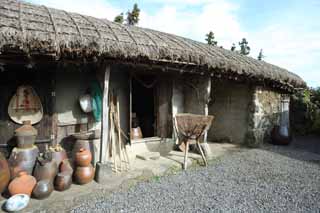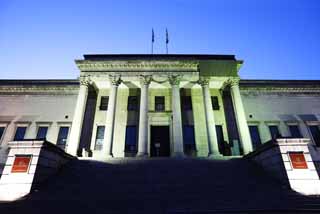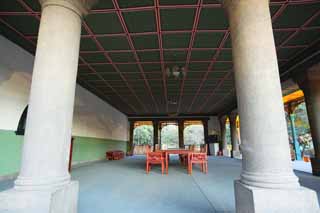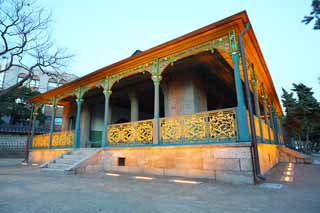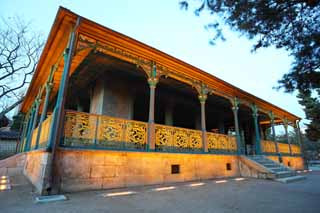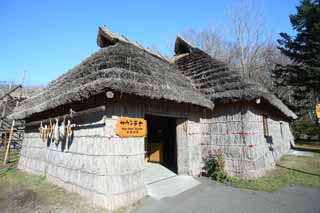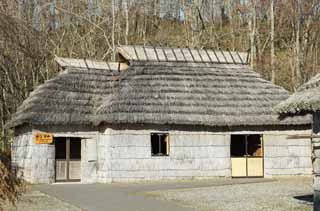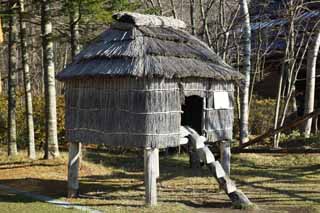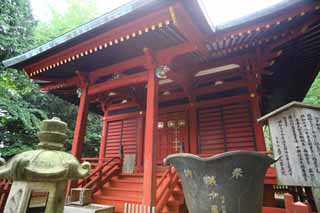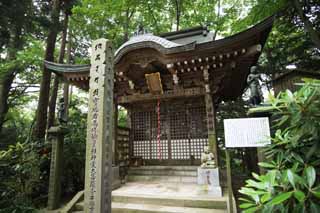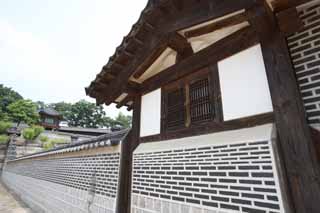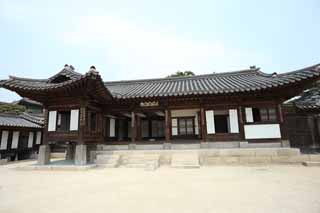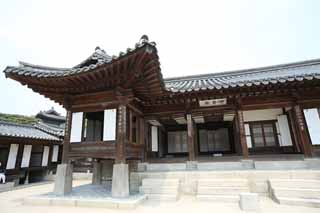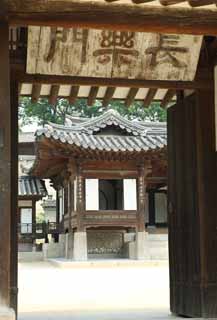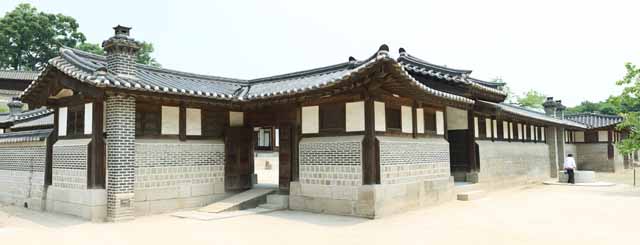Yun Free Stock Photos
keyword "a building" Part.10
Images can be modified and be used for commercial purposes without fee under the license.
Next keyword "an insectivore"
Click the thumbnail to look.
Keyword Search in this Site
You can search the image by entering the keyword in the following box.

Custom Search
Part No. Select
| Back | [1] [2] [3] [4] [5] [6] [7] [8] [9] [10] [11] [12] [13] [14] [15] [16] [17] [18] [19] [20] [21] [22] [23] [24] [25] [26] [27] [28] [29] [30] [31] [32] [33] [34] [35] [36] [37] [38] [39] [40] [41] [42] [43] [44] [45] | Next |
|---|
No.6840 Castle town folk village
| It is a traditional building in accord with the castle town folk village. Height is very low. The characteristic of the village of the eastern part valley zone stays in the castle town folk village in the village which was prefectural seat of Jeongwi Pref. until 1410-1914 years when Cheju Do was distributed between three prefectures. | |
| Camera: | Canon EOS-1Ds Mark III , Distagon 21mm F2,8 |
|---|---|
| Location: | Republic of Korea / Jeju Island |
| Size: | 5616 x 3744Pixels |
No.6770 A virtue Kotobuki shrine mason annex
| It is a mason annex of the virtue Kotobuki shrine. Of the mason Western, in the first floor under the ground, a stone building made of the granites of the third floor above the ground, was completed in 1937. Originally it was an older brother of Seongjong, a mansion of Tsukiyama Masaru, but the virtue Kotobuki shrine has begun to be used as a temporary palace (an imperial villa) in the next year in Christian era 1400's by the position of the Bunroku Keicho era by Hideyoshi Toyotomi of Christian era 1592 because the royal palace was reduced to ashes. | |
| Camera: | Canon EOS-1Ds Mark III , Distagon 21mm F2,8 |
|---|---|
| Location: | Republic of Korea / Seoul |
| Size: | 5540 x 3712Pixels |
No.6767 The virtue Kotobuki shrine serene contemplation eaves
| It is the serene contemplation eaves of the virtue Kotobuki shrine. In the building which adopted a Western style, the King of the Korea times, a high sect do a banquet, and it is the place that relaxed. A secret underground passage long narrowly which reached in the Russian park seems to still stay on the back of this building. Originally it was an older brother of Seongjong, a mansion of Tsukiyama Masaru, but the virtue Kotobuki shrine has begun to be used as a temporary palace (an imperial villa) in the next year in Christian era 1400's by the position of the Bunroku Keicho era by Hideyoshi Toyotomi of Christian era 1592 because the royal palace was reduced to ashes. | |
| Camera: | Canon EOS-1Ds Mark III , Distagon 21mm F2,8 |
|---|---|
| Location: | Republic of Korea / Seoul |
| Size: | 5616 x 3744Pixels |
No.6766 The virtue Kotobuki shrine serene contemplation eaves
| It is the serene contemplation eaves of the virtue Kotobuki shrine. In the building which adopted a Western style, the King of the Korea times, a high sect do a banquet, and it is the place that relaxed. A secret underground passage long narrowly which reached in the Russian park seems to still stay on the back of this building. Originally it was an older brother of Seongjong, a mansion of Tsukiyama Masaru, but the virtue Kotobuki shrine has begun to be used as a temporary palace (an imperial villa) in the next year in Christian era 1400's by the position of the Bunroku Keicho era by Hideyoshi Toyotomi of Christian era 1592 because the royal palace was reduced to ashes. | |
| Camera: | Canon EOS-1Ds Mark III , Distagon 21mm F2,8 |
|---|---|
| Location: | Republic of Korea / Seoul |
| Size: | 5616 x 3744Pixels |
No.6765 The virtue Kotobuki shrine serene contemplation eaves
| It is the serene contemplation eaves of the virtue Kotobuki shrine. In the building which adopted a Western style, the King of the Korea times, a high sect do a banquet, and it is the place that relaxed. A secret underground passage long narrowly which reached in the Russian park seems to still stay on the back of this building. Originally it was an older brother of Seongjong, a mansion of Tsukiyama Masaru, but the virtue Kotobuki shrine has begun to be used as a temporary palace (an imperial villa) in the next year in Christian era 1400's by the position of the Bunroku Keicho era by Hideyoshi Toyotomi of Christian era 1592 because the royal palace was reduced to ashes. | |
| Camera: | Canon EOS-1Ds Mark III , Distagon 21mm F2,8 |
|---|---|
| Location: | Republic of Korea / Seoul |
| Size: | 5616 x 3744Pixels |
No.6645 Saun Chise
| It is traditional house of Ainu in accord with Ainu race Museum, SAUNCHISE. It seems to be a meaning called [the house of this side]. People of Ainu lived in such a building in old days. | |
| Camera: | Canon EOS-1Ds Mark III , Distagon 21mm F2,8 |
|---|---|
| Location: | Japan / Hokkaido |
| Size: | 5616 x 3744Pixels |
No.6644 Pon chise
| It is traditional house of Ainu in accord with Ainu race Museum, PONCHISE. It seems to be a meaning called [a small house]. People of Ainu lived in such a building in old days. | |
| Camera: | Canon EOS-1Ds Mark III , Distagon 21mm F2,8 |
|---|---|
| Location: | Japan / Hokkaido |
| Size: | 5559 x 3660Pixels |
No.6642 The storage of food of Ainu
| It is storage of food, of Ainu in accord with Ainu race Museum [PU]. People of Ainu stored food in old days in such a building. | |
| Camera: | Canon EOS-1Ds Mark III , Distagon 21mm F2,8 |
|---|---|
| Location: | Japan / Hokkaido |
| Size: | 5616 x 3744Pixels |
No.6511 Okuno-in Temple of the Takao dried yam medicine emperor
| It is Okuno-in Temple of the Takao dried yam medicine emperor. In a building dedicated to Acala, it is the early foundation in the days of Edo. It is extremely Japanesque that there is a Shinto shrine in chaitya. As for Takao dried yam medicine emperor, it was done a founder as a prayer temple of the eastern country local deity by the Imperial ordinance of the Emperor Shomu formally in Takao dried yam medicine emperor Uki temple for 744 years in the Christian era by a learned and virtuous priest line group Bodhisattva. The name of the House of special remedy comes from that I did the foundation of The Buddha of Healing with a principal idol at first. | |
| Camera: | Canon EOS-1Ds Mark III , Distagon 21mm F2,8 |
|---|---|
| Location: | Japan / Tokyo |
| Size: | 5616 x 3744Pixels |
No.6503 A miraculous change temple of Mt. Takao
| It is the miraculous change temple of the main gate of a Buddhist temple side of Mt. Takao. In a building of copper roof of the gable-and-hip roof style, an image of [miraculous change God of War Ozunu Enno] (Giyoja Enno) who is the father of the mountains mountaineering asceticism is enshrined. Miraculous change God of War is a person wrapped in a mystery and a legend with the initiator of mountaineering asceticism born in 634 years. | |
| Camera: | Canon EOS-1Ds Mark III , Distagon 21mm F2,8 |
|---|---|
| Location: | Japan / Tokyo |
| Size: | 5616 x 3744Pixels |
No.6446 Comfortable good Hitoshi
| It is Korean world heritage, comfortable good Hitoshi of the Akitoku shrine. It is a simple building built in 1847. It was used as personal whereabouts of the King. The Akitoku shrine was founded as an imperial villa for Kyng-bokkung which was an original shrine in the palace of Li-regimed Korea in Seoul in 1405. | |
| World Heritage | Changdeokgung Palace Complex |
|---|---|
| Camera: | Canon EOS-1Ds Mark III , Distagon 21mm F2,8 |
| Location: | Republic of Korea / Seoul |
| Size: | 5616 x 3744Pixels |
No.6445 Comfortable good Hitoshi
| It is Korean world heritage, comfortable good Hitoshi of the Akitoku shrine. It is a simple building built in 1847. It was used as personal whereabouts of the King. The Akitoku shrine was founded as an imperial villa for Kyng-bokkung which was an original shrine in the palace of Li-regimed Korea in Seoul in 1405. | |
| World Heritage | Changdeokgung Palace Complex |
|---|---|
| Camera: | Canon EOS-1Ds Mark III , Distagon 21mm F2,8 |
| Location: | Republic of Korea / Seoul |
| Size: | 5616 x 3744Pixels |
No.6444 Comfortable good Hitoshi
| It is Korean world heritage, comfortable good Hitoshi of the Akitoku shrine. It is a simple building built in 1847. It was used as personal whereabouts of the King. The Akitoku shrine was founded as an imperial villa for Kyng-bokkung which was an original shrine in the palace of Li-regimed Korea in Seoul in 1405. | |
| World Heritage | Changdeokgung Palace Complex |
|---|---|
| Camera: | Canon EOS-1Ds Mark III , Distagon 21mm F2,8 |
| Location: | Republic of Korea / Seoul |
| Size: | 5616 x 3744Pixels |
No.6443 Comfortable good Hitoshi
| It is Korean world heritage, comfortable good Hitoshi of the Akitoku shrine. It is a simple building built in 1847. It was used as personal whereabouts of the King. The Akitoku shrine was founded as an imperial villa for Kyng-bokkung which was an original shrine in the palace of Li-regimed Korea in Seoul in 1405. | |
| World Heritage | Changdeokgung Palace Complex |
|---|---|
| Camera: | Canon EOS-1Ds Mark III , SIGMA MACRO 70mm F2.8 EX DG |
| Location: | Republic of Korea / Seoul |
| Size: | 3718 x 5491Pixels |
No.6442 Comfortable good Hitoshi
| It is Korean world heritage, comfortable good Hitoshi of the Akitoku shrine. It is a simple building built in 1847. It was used as personal whereabouts of the King. The Akitoku shrine was founded as an imperial villa for Kyng-bokkung which was an original shrine in the palace of Li-regimed Korea in Seoul in 1405. | |
| World Heritage | Changdeokgung Palace Complex |
|---|---|
| Camera: | Canon EOS-1Ds Mark III , SIGMA MACRO 70mm F2.8 EX DG |
| Location: | Republic of Korea / Seoul |
| Size: | 15464 x 5919Pixels |
Part No. Select
| Back | [1] [2] [3] [4] [5] [6] [7] [8] [9] [10] [11] [12] [13] [14] [15] [16] [17] [18] [19] [20] [21] [22] [23] [24] [25] [26] [27] [28] [29] [30] [31] [32] [33] [34] [35] [36] [37] [38] [39] [40] [41] [42] [43] [44] [45] | Next |
|---|
